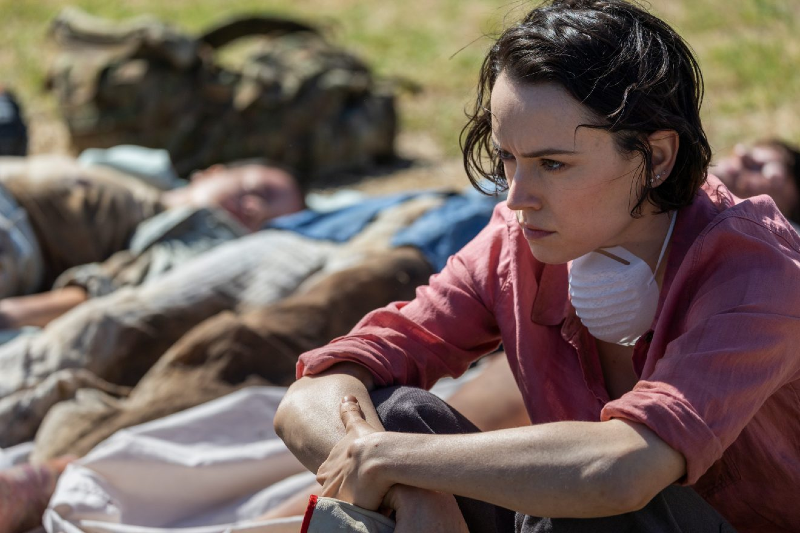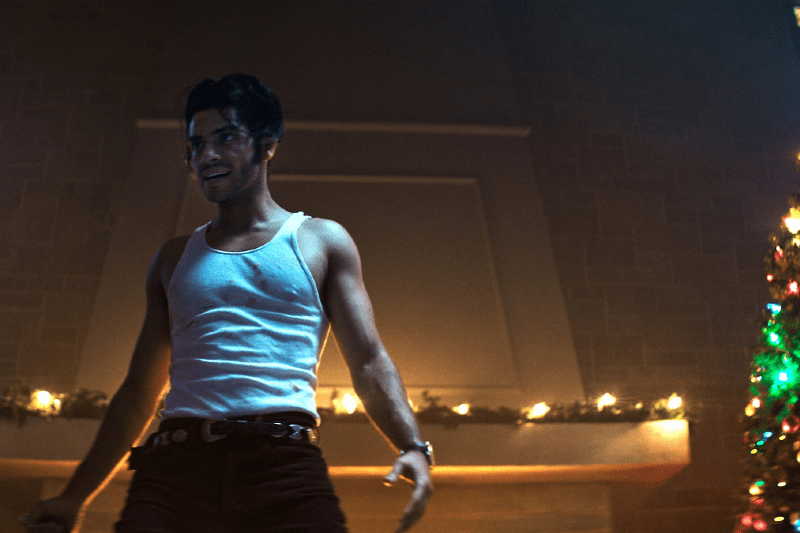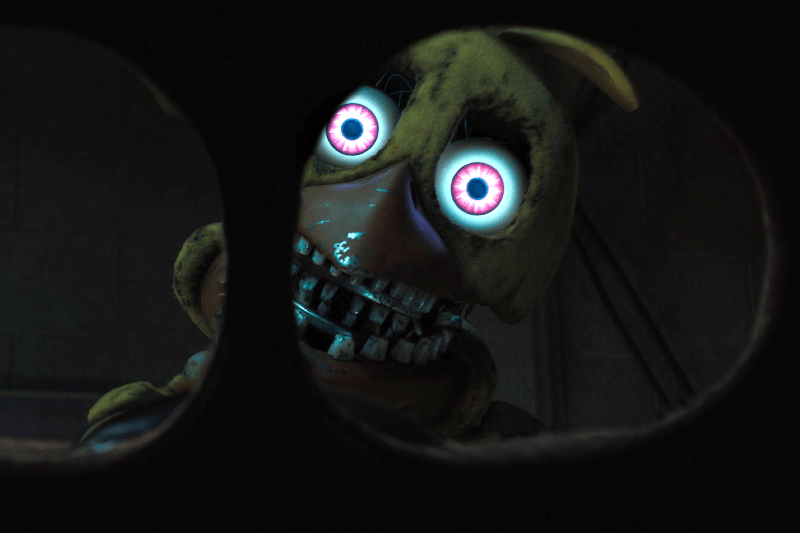In 2012, an indie romantic horror film was released on VOD, slipping under the radar of most film lovers. That film was Jack & Diane, written and directed by Bradley Rust Gray. Originally advertised as a “lesbian werewolf story,” many audiences and critics felt let down by the lack of lycanthropic horror in this dramatic tale of teenage love. This led to a lackluster financial performance, and it has mostly been forgotten over the past decade. I personally hadn’t heard of this film until I was tasked with writing about it for Queer Horror: A Film Guide. While it’s true the werewolf elements are used sparingly, it still adds a metaphorical layer of interest to the otherwise uneven tale of teenage love.
Jack & Diane begins by introducing Diane (Juno Temple), an English teen girl staying with her aunt in New York City for the summer. Not having access to a cell phone and needing to call her twin sister, Diane walks the streets trying to find a phone to borrow. This is how she meets Jack (Riley Keough), a masculine-presenting teenage girl working at a local shop. The two have an instant connection, especially after Diane gets a sudden nosebleed and Jack comes to the rescue.
Throughout the summer, these two young women have a tumultuous relationship. There is the typical teenage drama and fighting, but there is also much more impacting their time together. Jack is grieving the loss of her brother, Diane is missing her twin sister, and both deal with family members who simply don’t understand them. Not to mention, Diane will be leaving soon to attend a fashion school in Paris with her sister. Despite their disagreements and occasional break-ups, Jack and Diane always find their way back to one another.
Reading this description of Jack & Diane up to this point, you might be wondering where the werewolf theme comes into play. Audiences will find it sprinkled in almost immediately in the form of Diane’s nosebleeds. The film establishes fairly quickly that Diane often gets nosebleeds, but while watching the film, it seems they primarily happen when she’s around (or thinking) about Jack. As their connection grows, Diane begins to have visions and nightmares of herself turning into a monstrous creature.
Because the filmmaker chose to weave the horror elements in a subtle way, it does muddy the metaphor. Diane’s condition and visions are never explained, leaving it wide open for audience interpretation. One interpretation could be that the lycanthropic aspects are a representation of repression. While this is never explicitly stated, there are some interactions with Diane’s Aunt Linda (Cara Seymour) that seem to imply she is opposed to Diane’s same-sex inclinations. Even some of the phone interactions she has with her twin sister hint that, perhaps, Diane has always been interested in women and was sent away to try to quell that desire. Surely her family never expected Diane would meet Jack.
The nosebleeds seem to occur when Diane feels desire, specifically towards Jack. The more these two young women fall in love, the more intense Diane’s monstrous visions become. It culminates in two pivotal moments. First, Diane has a horrible nightmare. In that nightmare, she transforms into the werewolf-like creature before devouring Jack’s heart. When Diane wakes in fright, she turns to Jack and sees Jack’s nose bleeding profusely. Later, while the two are retrieving Diane’s suitcase from basement storage, the lights suddenly go out and she catches a glimpse of the monster from her visions.
The ending of Jack & Diane potentially throws a wrench in the idea of lycanthropy representing repression. This is because, after Diane’s heart-eating nightmare, Jack’s nosebleed seems to imply she is now suffering from the same affliction. Diane visualizing the creature in the storage area might even be telling the audience she’s seeing Jack as the monster. Of the two young women, Jack is clearly the more out-and-proud, so why would she suddenly have feelings of repression?
For Diane, the repression is fighting with that inner monster, as well as familial influence, telling her not to be with another woman. For Jack, it may be her fighting to repress her feelings towards Diane, not because some might think it’s “wrong,” but because she’s trying to protect her own heart knowing Diane will be leaving soon. The signs that Jack has the lycanthropic affliction don’t show until after she’s learned Diane is leaving for Paris and they try to spend what time they have left together, reinforcing this idea.
Many films intentionally leave plot points open for the audience to come to their own conclusions. That very well could have been the goal in this film, but it comes across more as being unclear because the metaphor isn’t strong enough. Everyone who watches Jack & Diane is sure to have a different interpretation of what unfolds. The bloody noses and visions may be representative of desires, self-hatred, puberty, or even first love.
Whatever interpretation viewers choose, the core story of Jack & Diane is still a coming-of-age tale with a Uterus Horror edge. It’s a tale of first love, queer romance, and self-discovery. The film really highlights that unique time in a young woman’s life when they struggle to find their own path. There is an intensity that comes along with first love, often leading to moments of volatility that are a core part of Jack and Diane’s romance. Both young women are at different points in their journeys at the start. By the climax, they appear to have reached the same place, only for their paths to diverge again as they’re forced to part.
Despite being light on the horror and the deeper meaning behind it, the lycanthropy aspect nonetheless takes the film from a typical teen romance to something much deeper. It’s an imperfect take on a queer romance. It’s an imperfect tale of Uterus Horror. Yet Jack & Diane is still a compelling work of cinema; it showcases the life-and-death feeling that comes with the major life changes of adolescence. If you’re a fan of Uterus Horror and queer romance, then be sure to give Jack & Diane a try. Perhaps you will find a different meaning buried within the blood and fur.
About this series: in a genre typically considered “for the guys,” it’s time to give a nod to the ladies. Uterus Horror is a subgenre of horror films that focuses on the uniquely female experience of puberty and the act of coming into your sexuality, using horror elements to emphasize and/or act as a metaphor for that experience. These films are often ignored in theaters but quickly develop cult followings. Columnist Molly Henery, who named and defined the subgenre, tackles a new film each month and analyzes how it fits into this bloody new corner of horror.







